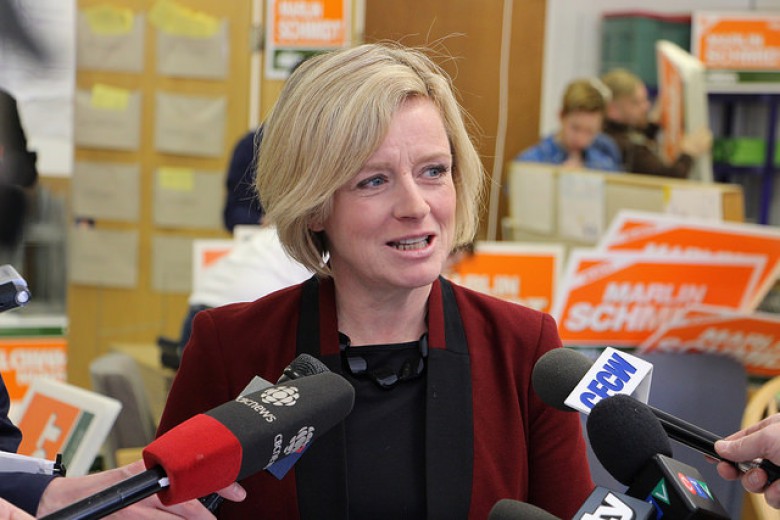
When your intention is to challenge the status quo and provoke debate and discussion, you’re likely to ruffle some feathers now and then—and not always those of the people you set out to unsettle.
In a recent issue of Briarpatch we ran an article that mentioned, in the context of a larger critique, an organization that happened to have purchased advertising in the same issue. When a representative of that organization complained to us about how they had been represented, we invited them to submit a letter to the editor to correct any perceived imbalance, believing that an open and constructive discussion about the issues raised in the article would be in everyone’s best interest. They declined, and instead they cancelled their subscription and indicated that they would not advertise with us in the future.
They were, of course, fully within their rights to discontinue their business with this “relatively small, obstreperously leftist, magazine” (as canadianmags.blogspot.com recently described us). This incident got us thinking, though, about the perennially delicate relationship between editorial content and advertising in the alternative press. How could we have handled the situation differently? Is the fact that we sell advertising to like-minded organizations at odds with our frequently proclaimed independence? We recognize the investment that organizations make when they place an ad, and we particularly appreciate and value the commitment of our regular advertisers. But how can we ensure that the magazine’s editorial integrity—the point, surely, of the whole endeavour—remains intact? There are no easy answers to these questions.
That’s why we decided it would be best to bring you, our readers and supporters, into the discussion. It’s your magazine, after all.
Who pays the piper?
Whenever you pick up a newspaper or magazine, or tune in to a TV newscast, it’s worth getting in the habit of asking the age-old question, Who pays the piper? Who owns the publication? Where does its revenue come from? To whom is it beholden? Who are the major advertisers, and how dependent on advertising is it? In short: when push comes to shove, who calls the shots? These questions are as important to ask of Briarpatch as they are of the National Post, the Epoch Times, the Canadian Broadcasting Corporation, or your local arts weekly.
In Briarpatch’s case, we are an independent non-profit organization with a $100,000 budget, run by a volunteer board of directors, a core staff of two, and a network of occasional volunteers.
Not counting project-related grant funding from the Canadian Magazine Fund, we get about a third of our revenue from ad sales. The other two thirds come from subscription and newsstand sales, donations, and fundraising. Usually less than 20 percent of the magazine consists of paid ads.
As a reader-funded, volunteer-run non-profit organization, we are accountable first and foremost to our readers.
By way of comparison with other media, network television is almost entirely funded by advertising. US newspapers, on average, get a full 87 percent of their revenue from advertising (World Association of Newspapers, 2001). A little closer to home, Canadian magazines get, on average, sixty percent of their revenue from ad sales (CMPA, 2001)—though there’s a wide range within that average. Overwhelmingly, newspapers, television stations and larger magazines are run by privately owned or publicly traded for-profit corporations.
A room with a view
As an independent magazine, ruffling feathers—even, sometimes, those of our readers and supporters—is what we do. We think that’s actually the media’s job.
We believe the best way to serve our readers is not to act as a mirror—flattering you with stories you’ve already heard before, safe opinions you already know you agree with, while the world combusts outside your door.
Rather, we seek to be a window on those issues, places, people and trends that the mainstream media won’t show—a venue for open and principled discussion and debate. We seek to challenge and to surprise, to push you out of your comfort zone, hopefully while challenging and surprising ourselves in the process. Our aim is to provide you with the accurate information and thought-provoking analysis you need to make sense of the trends that are rapidly reshaping the world around us, as well as the tools to do something about them. (Tall order for such a small publication, but we’re nothing if not ambitious!)
We wear the slogan fiercely independent media with both pride and humility—pride because true independence has become a rare thing indeed in a mediascape increasingly concentrated into fewer and fewer powerful conglomerates, and humility because doing so means that we must forever be racking our brains for creative fundraising ideas.
For us, a few pages of advertising help significantly to keep us in the black. Our advertisers share with us the belief that a democracy is only as strong as its news media is independent. They also know that by advertising with us, they’ll be reaching an audience of thoughtful, critical, and politically engaged individuals who will likely be open and receptive to their message. We hope this is a win-win situation.
They don’t advertise with us because they think they’ll be able to sway editorial decisions unfairly in their favour.
Media in the public interest requires outlets that are willing and able to draw a strict line between advertising and editorial decisions. This is particularly true when the decisions involve giving voice to those segments of the population that are too often marginalized or shut out of the public sphere—youth, women, people of colour, Aboriginal peoples, refugees, migrant workers, and many others. Briarpatch, to whatever extent we can given our very limited reach, aspires to do just that.
Criticism and debate are healthy—indeed, essential—parts of both a functioning democracy and an effective social justice movement. If we do not create spaces for the free and open discussion of the most pressing issues we face, we simply will never make any headway on these issues.
Creating such a space while selling ads to progressive organizations that recognize the need for alternative voices is the task we’ve set ourselves. Can we do both? I hope so. Whether you’re an occasional reader, a longstanding supporter, or a regular advertiser, let us know what you think.






